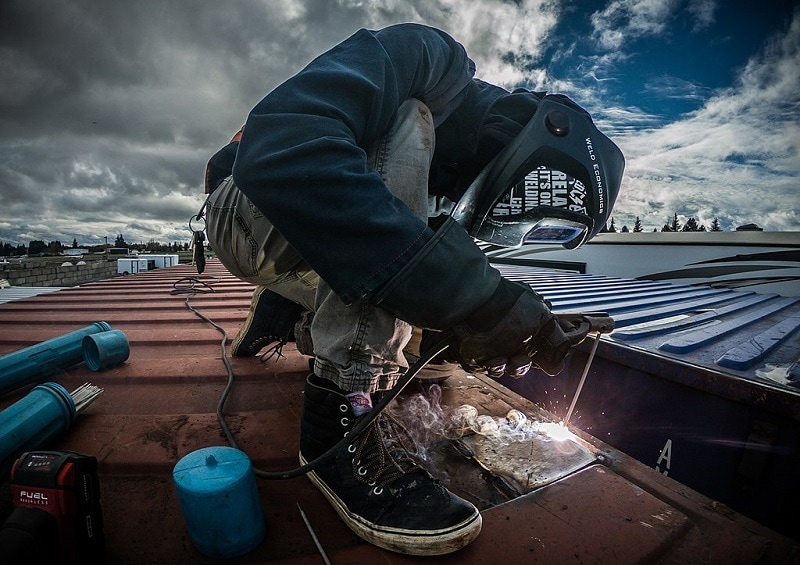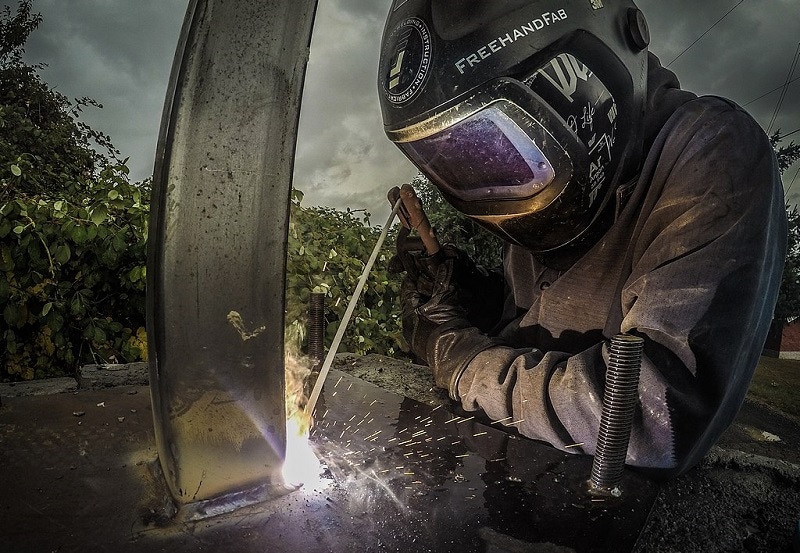What Does Flux Do in Welding? Beginner’s Guide 2024
Last Updated on

If you’ve ever messed around with a MIG welder, you know that it can produce sound and clean welds. However, not all welding is clean like this. Stick and FCAW processes produce a lot of smoke and dust. But why? Stick and Flux-cored welding utilize flux.
So, what does flux do in welding? If you can have a good weld without flux, why use it at all? Not all welding processes work for every application. There are times when MIG will be an ideal choice because of its ease and cleanliness. But there are necessarily times when Stick or FCAW must be used. This is partly because fluxes have properties that aid structural welding, including producing stronger welds than MIG.
What is Flux?
The Merriam-Webster Dictionary defines flux as “a continuous flow.” Another definition states that it is a “substance used to promote fusion,” and “the rate of transfer of fluid, particles, or energy across a given surface.” So, it involves flow, and in this case, a transfer of filler metal across the arc into the molten weld pool. Fluxing agents are used to help aid the flow.
Fluxes are made from a combination of organic and inorganic materials including but not limited to ammonium chloride, resin acids, zinc chloride, hydrochloric acid, and borax. But many fluxes also include alloyed metal powder to help welds acquire certain mechanical properties such as hardness, tensile strength, etc.
Fluxes typically cover stick electrodes and are found at the core of the tubular flux-cored wire. For stick electrodes, the filler metal rod is dipped into a molten flux which then solidifies.
How does Flux Welding work?
Since flux is attached to the stick electrode or FCAW electrode filler wire, it is deposited at the same time as the filler metal.
When the arc is initiated, the heat begins to melt the base metal and the electrode. As the filler metal is being deposited the flux enters weld pool as well. For Stick and FCAW processes, it creates much more arc stability than welding without flux. Welding without flux, even with MIG sometimes, can be sputtery and messy. The flux helps the ‘flow’ of the molten metal stay in the place where the welder wants it.
The flux, being mostly made of non-metallic materials, will not fuse properly into the weld. Instead, a good portion of it gasses off to create an atmosphere that will protect the weld. By the flux evaporating into gas, it pushes away the normal atmospheric gases that can contaminate the weld and interfere with its shape during the welding and cooling process.
But it doesn’t stop there. The flux enters the weld pool, yes. Much of it gasses off, but not all of it. The remainder cannot stay in the weld. This can cause serious defects, one of which is called ‘slag inclusions.’ Slag is the result of the remaining flux in the weld pool floating to the top. This is not accidental; it is by design. The slag provides additional protection for the weld while it is still in the molten state. If welded properly, the flux will float to the top creating a slag that can be easily chipped off with a slag hammer.
What Types of Welding Use Flux?
Stick (SMAW)
Stick electrodes are covered in flux. This process is called Shielded Metal Arc Welding since the flux ‘shields’ the weld from atmospheric gases. It is used on a constant current transformer that utilizes a stick electrode holder, commonly called a stinger.

Flux-Cored Arc Welding (FCAW)
This flux welding process is a type of MIG wire welding. The difference is that this wire includes flux, whereas what we normally think of as MIG is solid wire. Flux-cored welding can be wholly shielded by the flux (self-shielded) or also utilize shielding gas for additional coverage (dual shield), though the wires are distinct.
Submerged Arc Welding (SAW)
An automated flux welding process that uses a solid wire, SAW is commonly used where there are highly critical welds that need to be X-ray or ultrasonically tested. The difference between this process and the more common Stick and FCAW is that the flux is not a part of the electrode. Also, the arc is completely ‘submerged’ under a fusible granular flux which is fed into the weld zone by a hopper on the automated machine. This flux, though fusible, also creates slag.
Frequently Asked Questions (FAQs)
Is Flux Welding Strong?
Since welding processes that utilize flux are used to weld thicker material, it is necessarily stronger. Stick and FCAW are used to weld structural steel and have much greater penetration than standard MIG welding.
Is Flux-Cored Welding Easy?
While no welding process is technically easy, this can be one of the quicker processes to learn, especially in comparison to TIG or Stick welding pipe.
Can You Use Flux Welding Indoors?
While Stick and FCAW can be welded outside, you can certainly use them indoors. Just be sure that you have plenty of ventilation since the fumes are carcinogenic.
Conclusion
All of the smoke and dust does have a purpose after all. Just be sure that you’re not breathing it all in. Place a fan close (not too close or you will blow away the gas shield) to where you are flux welding. Lastly, always clean off all slag from your welds!
